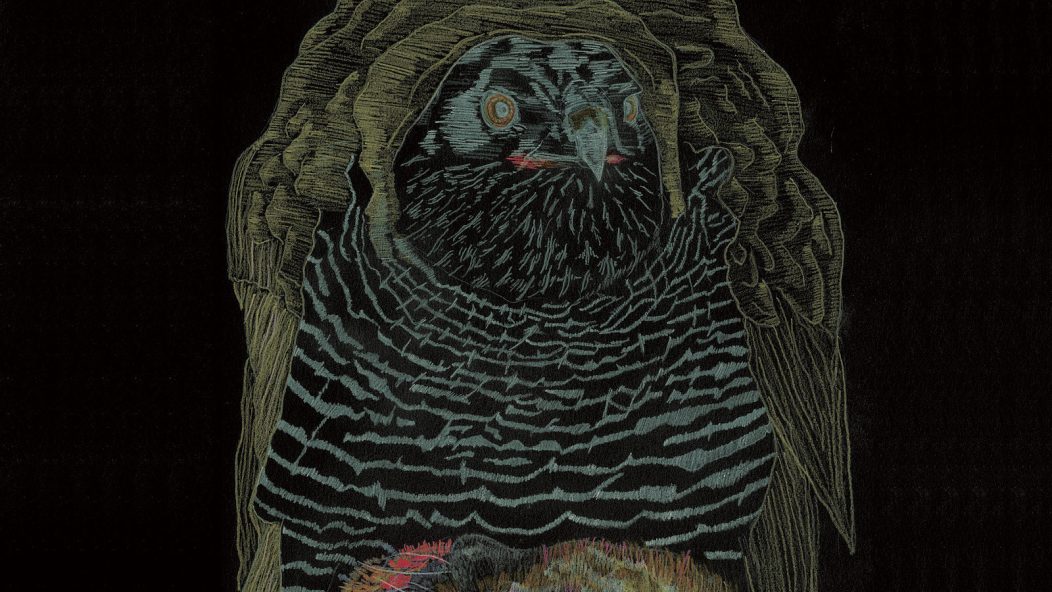
Wrekmeister Harmonies Portrays An Entrancing Disaster on "We Love to Look at the Carnage"

…
It occurred to me, as I was listening to the penultimate track of We Love to Look at the Carnage, that the multi-instrumental soundscape I was nearing the end of reminded me of Arcade Fire — but an Arcade Fire that cut all ties to normalcy and just sold their drums off for weed money. More seriously, what Wrekmeister Harmonies has been doing for over ten years is as much an evolution of the oddball charm of indie rock as it is a thoughtful fusion of post-metal, doom, and drone. Featuring a gripping emotional appeal, cleverly rhyming lyrics, and eclectic choices of instrumentation, the group’s latest album offers a cinematic portrayal of a flawed protagonist descending into something like madness, framed in the surreal lighting of urban alleyways on a rain-slick evening. There isn’t one single moment that captures the full potency of the record; rather, the compelling and elaborate story We Love to Look at the Carnage tells is a continuously persuasive argument for its quality.
…
…
Formed in 2006 and based in NYC (formerly Chicago), Wrekmeister Harmonies is a music collective helmed by J.R. Robinson and Esther Shaw. Together, they split artistic duties across all aspects: Robinson writes lyrics and delivers them along with a large chunk of the instrumentals, while Shaw created the cover artwork and, notably, contributes the haunting violin that permeates the record. Chief among the long list of guest personnel that also participated are Thor Harris (of Swans) and Jamie Stewart (of Xiu Xiu), each adding multiple elements into the mix. I wasn’t entirely kidding about the selling the drums thing — there’s percussion here, but applied sparingly and not the kick-snare-hat sort.
There’s an implicit understanding that this is a heavy undertaking — thematically, aesthetically, it’s about as “metal” as you can get, albeit in an artful, eccentric fashion. However, a lot of this album is created by softer textures: violin, bright chimes, synthy orchestral swells, and gently plucked guitar. All of these conjure visions of a brisk, autumnal urban night, where the weather hasn’t quite reached the uninhabitable levels of deep winter. As a wintry city-dweller myself, in these months we treasure thoughts of those times — back to a period when there wasn’t annoying multi-layered snowy detritus to deal with or transit delays brought on by severe frost — so it holds a feeling of nostalgia as well. When the heavy guitar does surface, it’s an attention-catching blast of cold wind to the face — not entirely unexpected, but uncommon enough to wield significant power with its sparing use.
These disparate elements are harnessed together into complex arrangements that succeed on their own as individual songs, but together carve out an emotional journey built from a host of sentiments: unwilling lucidity, dour self-reflection, and yearning are all rendered into melody and play a part in the odyssey. The result — vivid, provocative music, building an incomplete narrative engaging enough to coax your imagination into filling the holes in. The middle track “Coyotes of Central Park,” the shortest of the bunch, mentally sketches out a fleeting scenario to me: our anti-hero, finding himself in a place of quiet beauty late into the night, stops, deliriously and frozen in wonder, to gaze at the city’s nocturnal scavengers; then, shaking himself awake again, he thrusts his hands into his pockets and stomps off, consumed by a half-known purpose.
Following that interlude, at the emotional climax of “The Rat Catcher,” fuzz-powered guitar and violin sing out together with a chorus of unidentifiable, noisy accompaniment behind them. The red-hot distortion that accompanies these moments seems to tear apart the fabric of the song, causing these intervals to feel like glimpses into an unhinged reality that lurks behind the album’s composed surface. The final few minutes afterwards are something of a mental breakdown: the lyrics are nonsensical when shortly before they were a personal recollection, and intermittent waves of rumbling noise, shockwaves triggered in a cognitive collapse, jolt the listener unpredictably.
I probably won’t find myself in the situation the album portrays any time soon, but it’s easy to sympathize with the scenario, and that forges a connection to the material that I find unusual in most music in this vein — whether based on true events or not, We Love to Look at the Carnage feels personal in a way that the genre normally is not inclined to pursue. That sets it apart for me and made it easy to go back for more listens as I tried to discern more of the lyrics each time (set just low enough in the mix that you have to strain to catch all the words) and unravel the mysteries within them.
There’s one mystery I’m still struggling with, primarily — the title. The album, as J.R. Robinson explains it, focuses on the philosophy of stoicism, but that’s a far cry from the thoughts of morbid fascination that the title evokes. Perhaps it’s a cynical take on society’s deviation from the ancient practice, or an exaggerated paraphrasing of stoicism’s key tenet of negative visualization — in any case, it fits. Damned if I know what it means, but it fits. The tumultuous voyage charted by We Love to Look at the Carnage is somewhat of a trainwreck itself: a beautiful one that’s a pleasure to witness even at its darkest, an experience that shouldn’t be missed.
…

…
We Love to Look at the Carnage releases February 21st via Thrill Jockey Records.
…
Support Invisible Oranges on Patreon and check out our merch.
…










